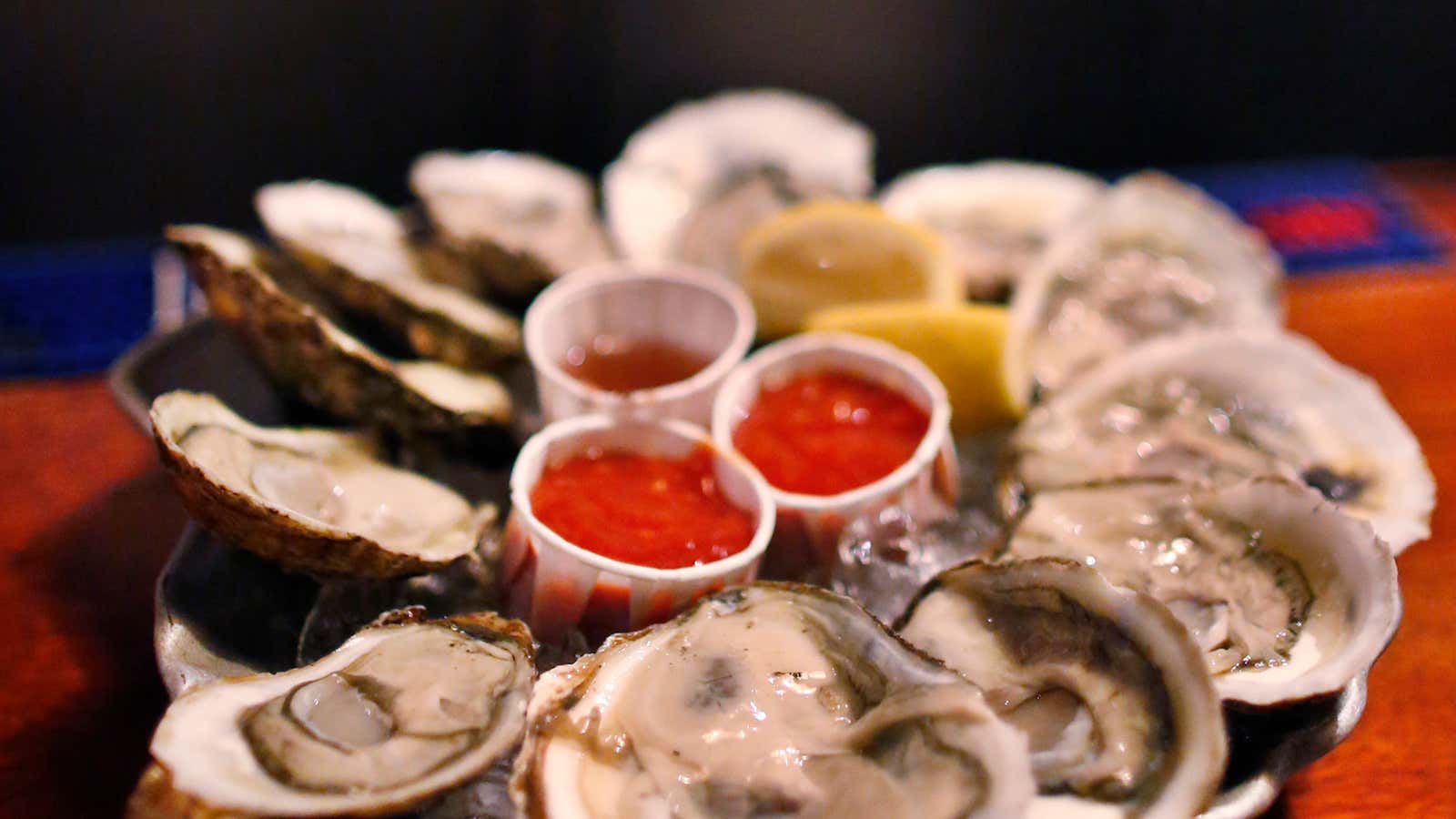Fishermen, marine biologists, and seafood restauranteurs looked on in horror at the staggering explosion of a BP-owned oil rig in the Gulf of Mexico in 2010, which rocketed millions of barrels of oil into the water. Of the treasured local sea creatures endangered by the spill, oysters—small, stationary, and helpless—were especially vulnerable.
“The whole time I was watching that stupid spill cam with dispersant being injected into the spill, I thought oysters, oysters, oysters,” New Orleans chef Frank Brigsten told local news outlet the Times-Picayune last year. Louisiana, which was hit particularly hard by the spill, was the leading oyster-producing US state at the time, and to its residents oysters remain a symbol of local pride.
BP’s ruinous spill, which took 87 days to stop, resulted in the largest single-entity civil settlement in US history. On Monday (Oct. 5), the company agreed to pay out $20.8 billion for damages, penalties, and ecosystem restoration efforts. Accompanying the US Justice Department’s steep bill were details on the extent of the wreckage: 11 human lives lost, some 80,000 birds killed, 35,000 hatchling sea turtles injured, and a plethora of other appalling figures.
The department also revealed that four to eight billion oysters were either wiped out or became unable to reproduce, resulting in the loss of between 240 and 508 million pounds of edible oyster meat.
That figure—which doesn’t include collateral damage such as the growth problems faced by surviving oysters—has translated to furiously high oyster prices at restaurants and a slew of job losses at locally-owned operations. Though scientific inspections deemed Gulf oysters edible eight months after the spill was contained, the area’s supply hasn’t returned to even a fraction of what it was. Of the oysters currently in the water, health conditions are dubious.
Petroleum compounds can have “sublethal physiological effects” on oysters’ respiration and gonads, Ray Grizzle, a University of New Hampshire professor who studies oyster ecology, tells Quartz. Not only does that leave fewer oysters for humans to eat, but also fewer to reproduce.
